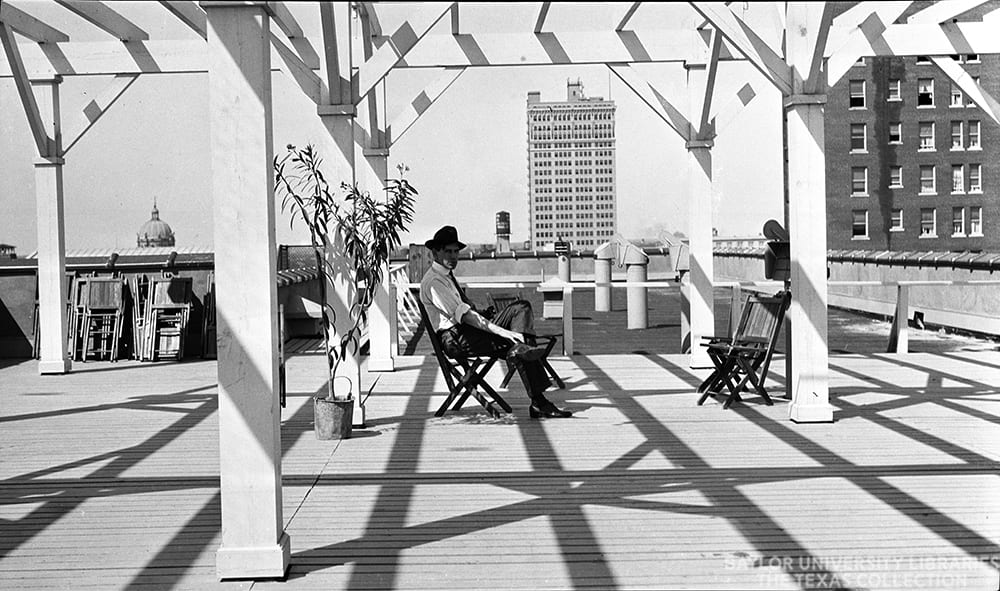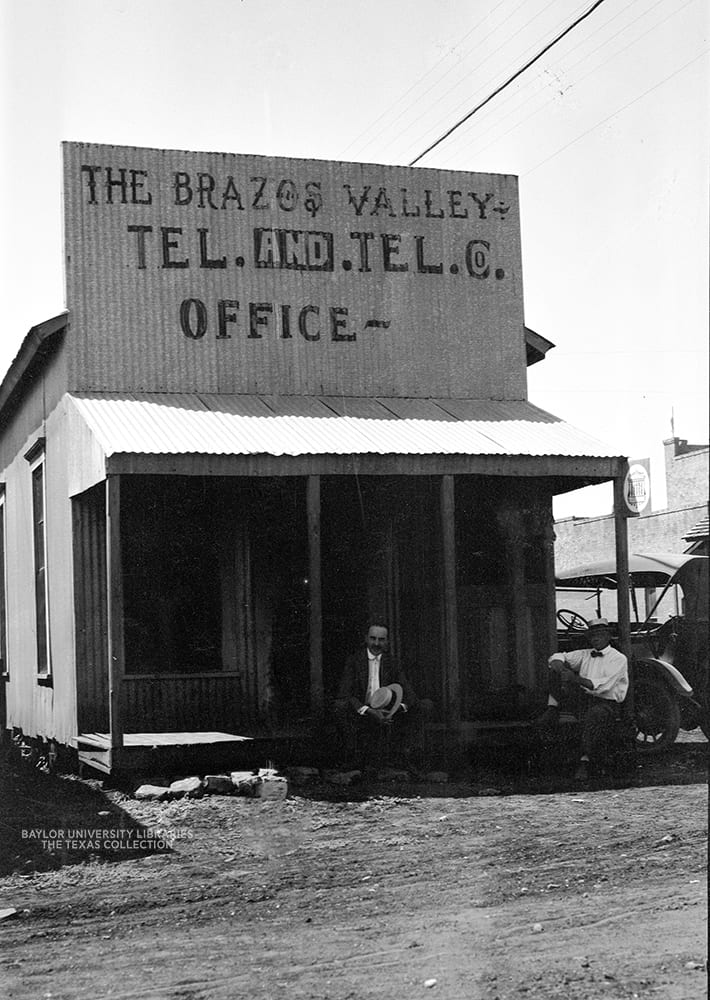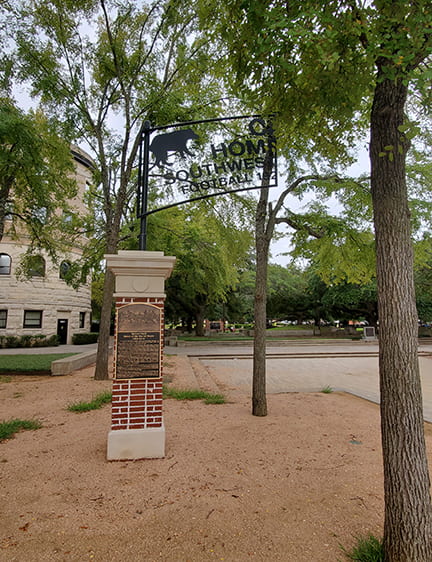By Geoff Hunt, Audio and Visual Curator, The Texas Collection, Baylor University.
Texas has changed quite a bit over the years, as is readily seen in our vast photograph and postcard collections. To help bring some of those changes to life, we’ve created a “Texas over Time” blog series that will illustrate the construction and renovations of buildings, street scenes, and more. Our collections are especially strong on Waco and Baylor images, but look for some views beyond the Heart of Texas, too.
Located on 219 South Fourth Street, Waco, Texas, the Behrens Lofts now occupies what was once known as the Behrens Drug Company building. The structure was completed in 1913, and was headquarters for the Behrens Drug Company. Earlier locations for the company were Fourth and Washington (1891-1896) and Third and Mary Streets (1896-1914), Waco. The company was founded by Dr. Herman Behrens. According to the Waco-News Tribune, April 19, 1925, Dr. Behrens was born in Seehide, Germany, on February 20, 1852. He moved to the U.S. as a child with his parents, and came to Paris, Texas, in 1874, to begin work in the drug industry. He came to Waco in 1878, to continue this trade and helped operate a firm called Behrens and Moser. After operating this company for a few years, he returned to Germany but came back to Waco again to help form another drug company called Behrens and Castles. In 1891, The Behrens Drug Company was incorporated. On December 17, 1905, Dr. Behrens died. However, Dr. W.R. Clifton soon became the company’s president and held this position for many years and the company achieved great success despite its founders’ passing.
As a wholesale company, the firm sold “drugs, beauty products, talking machines, cigars, sundries, soda fountains, store fixtures, and more, to smaller business. Additionally, it even manufactured medicines in-house for a short time in the 1920’s. In the Waco-News Tribune, April 30, 1922, the company ambitiously states: “there is not an article in the drug dictionary which the Behrens Drug Company does not handle.” Another product sold was called Mrs. McCormick’s Beauty Cream, “popularized by the Behrens Drug Company from the hands of its originator, a Waco woman, who years ago sold it from house to house…” In 1925, Behrens Drug Company employed 68 people, and supplied goods across the state. In the 1940’s and 1950’s, Behrens expanded to include locations in both Lubbock and Tyler, Texas. The Clifton family continued the presidency of this company with Albert C. Clifton, and the company’s last president, William Lacy Clifton serving until the Behrens company was bought out by Cardinal Health in 1994.
The “Then in circa 1920” picture in the image sequence below shows: the Behrens Drug Company building, located at 219 South Fourth Street, Waco, Texas. Photographer, Fred Gildersleeve, General Photo File, The Texas Collection, Baylor University. Same view of building but now Behrens Lofts in 2020 by GH.


Works Sourced:
“Behrens Drug Company Rounds Out 40 Years of Service in Waco,” The Waco-News Tribune, April 19, 1925.
“Waco Has It,” The Waco-News Tribune, April 30, 1922.
Waco Chamber of Commerce News, July-September 1926, The Texas Collection, Baylor University.
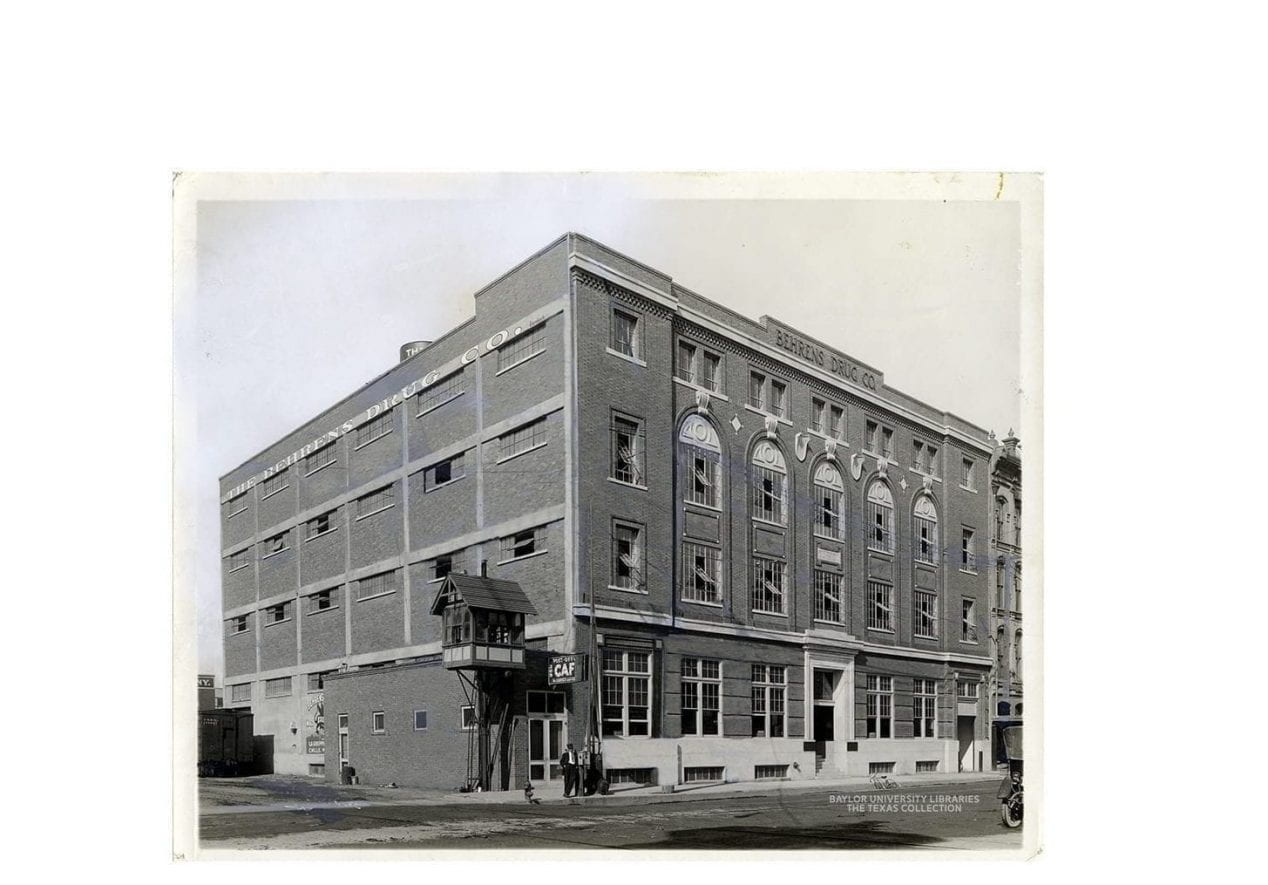
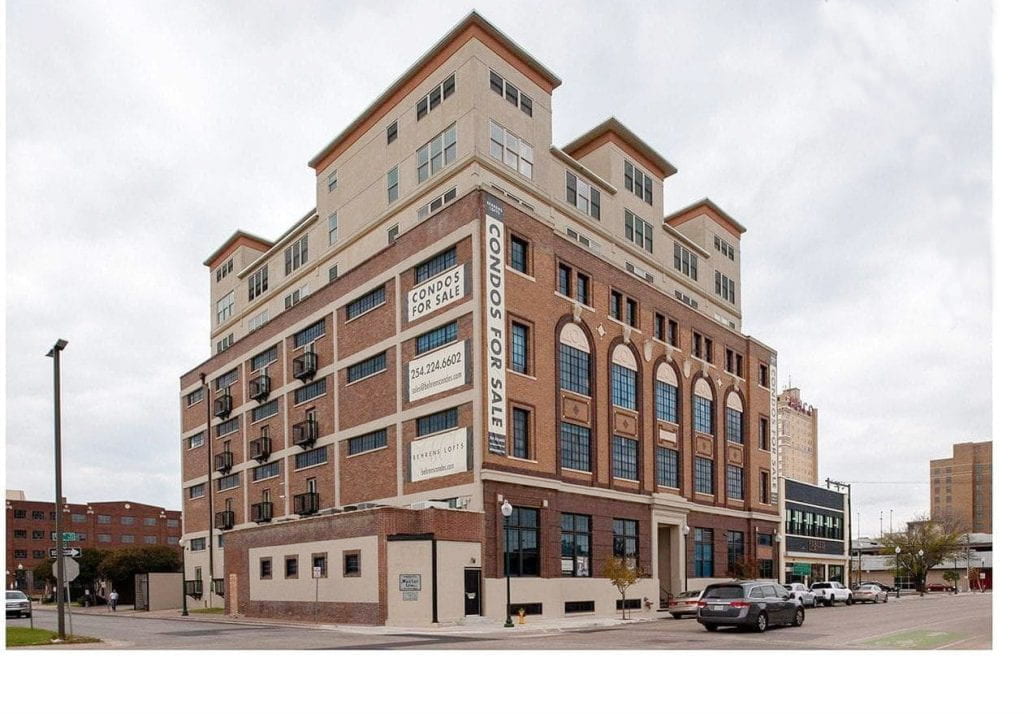










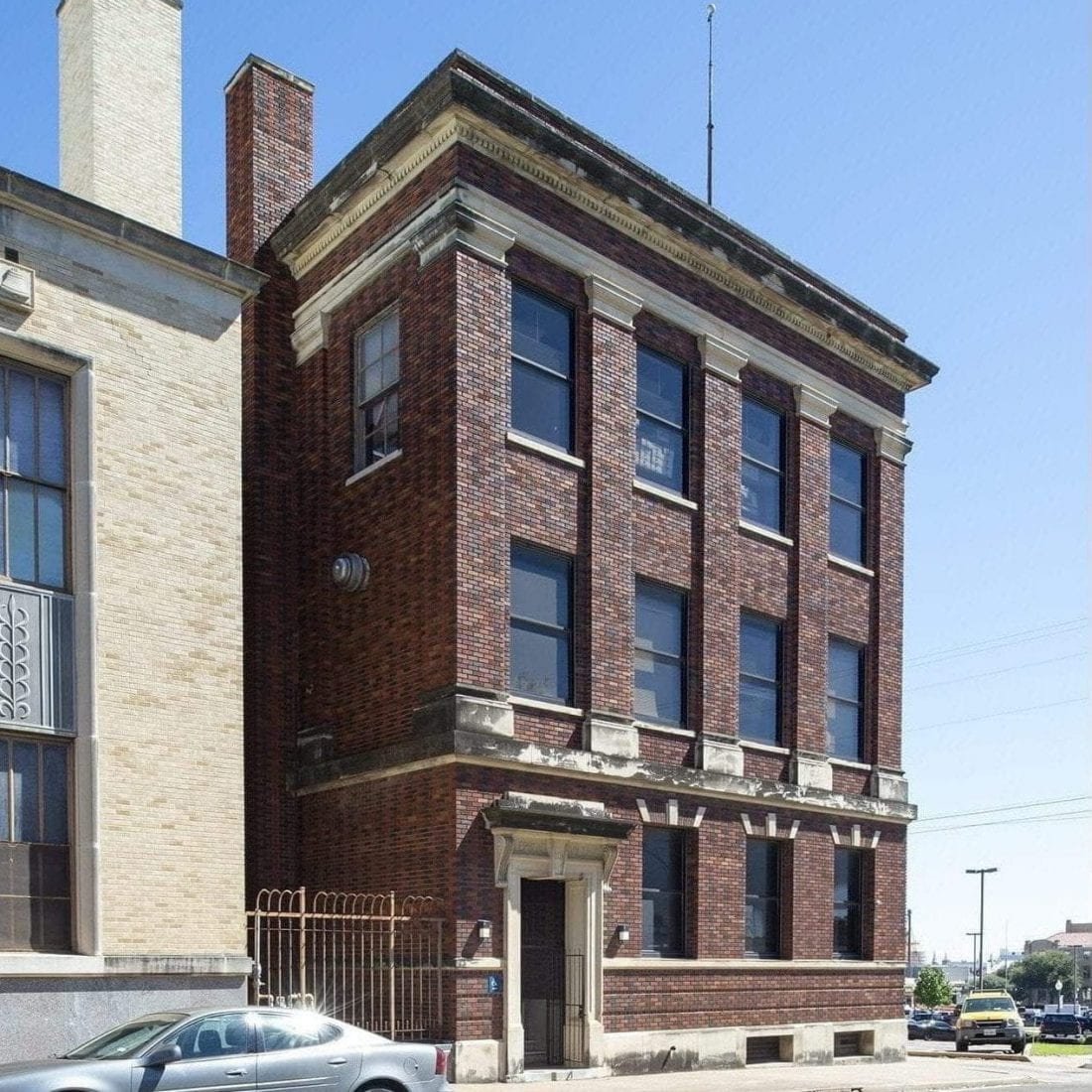
![tot003_1_neff_TTC_watermark[2] copy](https://blogs.baylor.edu/texascollection/files/2020/09/tot003_1_neff_TTC_watermark2-copy-e1601310108970-1200x700.jpg)
![ttc_03_neff_TTC_watermark[2]](https://blogs.baylor.edu/texascollection/files/2020/09/ttc_03_neff_TTC_watermark2-e1601582783886-1200x700.jpg)
![004_2_neff_TTC_watermark[2]](https://blogs.baylor.edu/texascollection/files/2020/09/004_2_neff_TTC_watermark2-1-e1601584437396-1300x800.jpg)
![zzneff_TTC_watermark[2]](https://blogs.baylor.edu/texascollection/files/2020/09/zzneff_TTC_watermark2-e1601319767907-1300x800.jpg)
